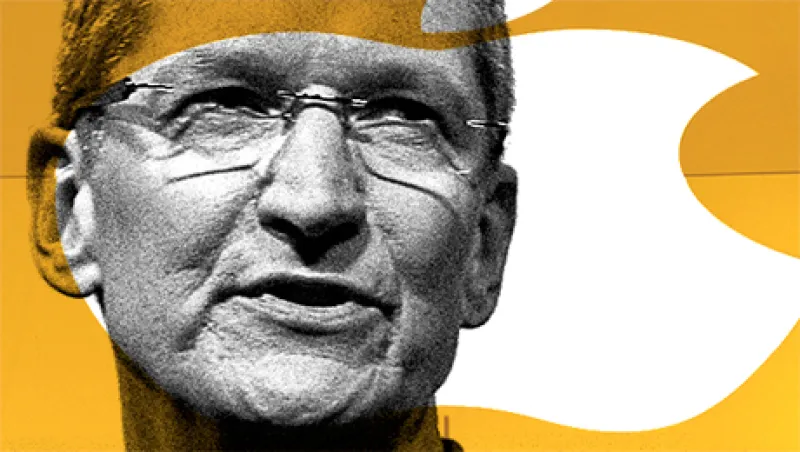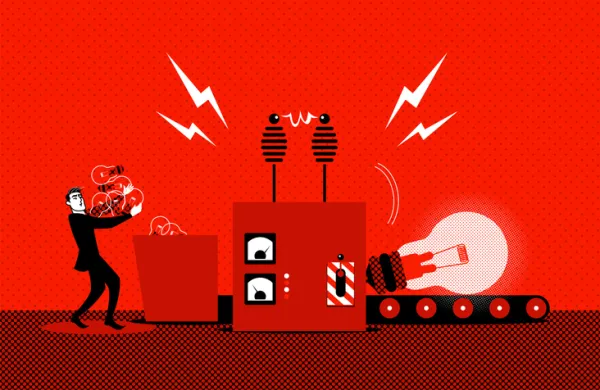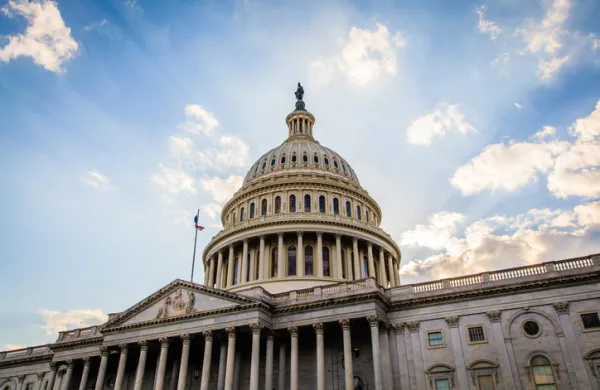In April, Apple claimed a first outside the realm of digital electronics. The Cupertino, California–based maker of iPhones increased its stock buyback plan to $60 billion from $50 billion, calling it “the largest single share repurchase authorization in history.”
If one company can signal that it’s high time to take a quantitative look at stock buybacks, it’s Apple. “We believe so strongly that repurchasing our shares represents an attractive use of our capital,” Apple CEO Tim Cook told investors, “that we have dedicated the vast majority of the increase in our capital return program to share repurchases.”
| Buyback Scorecard The Most and Least Effective Stock Buyback Programs The S&P 500 as Stock Repurchasers Best and Worst Programs Industry Comparisons |
Enter the latest quarterly Institutional Investor Corporate Buyback Scorecard, which focuses overdue attention on stock repurchases. Designed and computed by Fortuna Advisors, a New York–based corporate strategy consulting firm, the ranking submits buybacks to the same rigorous return-on-investment analysis that governs acquisitions and other material uses of corporate cash.
Investors who wish to weigh the merits of buybacks should recognize the methodology behind the Corporate Buyback Scorecard. The rankings calculate the total return on cash expended on buybacks for the two years ended March 31, 2013, taking into account dividends avoided and the average value of shares at the end of each quarter during that period.
Buyback ROI reveals a less ebullient story at Apple than Cook described. The company’s -56.7 percent return on buybacks trails those of all S&P 500 companies that compete in the rankings. Every dollar spent by Apple on share buybacks during the two-year period was worth less than 44 cents. The tide may still turn for Apple’s buyback ROI if the company repeats past magic in consumer markets and the stock price zooms to new highs, but contrary to the CEO’s assessment, the recent $2 billion in buybacks does not look like an attractive use of its capital.
The story is very different for Tesoro Corp. The San Antonio, Texas–based independent refiner and marketer of petroleum products tops our Corporate Buyback Scorecard. Although energy lagged all but two sectors in the ranking, Tesoro reaped a 91.8 percent return on its buybacks — performance any shareholder would welcome. Every dollar Tesoro used to buy shares during the past two-year period was worth nearly $2 in capital gains and dividends.
As the Dow Jones Industrial Average streaked toward record territory during the first quarter and experts began to murmur about looming market corrections, 68 S&P 500 companies unveiled or expanded share buyback programs. Home improvement retailer Home Depot led the way with a $17 billion program, followed by drugmaker Merck & Co. with $15 billion and food and beverage giant PepsiCo and shipping company United Parcel Service, each with $10 billion.
All told, first-quarter buyback announcements came slightly above $140 billion, a payout 116 percent larger than dividends at S&P 500 companies in the same period. Share repurchases in the first quarter — stock that changed hands, not announcements — topped $97 billion, according to Fortuna.
“During the downturn in 2008 and 2009, even companies with good cash balances didn’t buy back stock, and now they are buying back shares,” says Adam Parker, Morgan Stanley’s top U.S. equity strategist. “A lot of companies have not done a particularly good job of buying low.”
The fanfare that typically accompanies buyback announcements never hints that poor execution can torpedo more value than accounting-based bumps in earnings or cash flow can produce on their own. “There are companies buying a lot of shares, and that does not appear to help the stock prices,” says A.M. (Toni) Sacconaghi, who follows the hardware sector for Sanford C. Bernstein & Co. in New York. By his count, Dell, EMC Corp. and Hewlett-Packard Co. have all repurchased shares in recent years near their current market caps without assisting their stock prices.
Mark Moerdler, who follows the global software sector for Bernstein, agrees that buybacks seldom create value — they beget scant value at best. “Adobe bought back a pile of stock in the past couple of years,” he notes, “but the buybacks didn’t do much for the shares until the move to a subscription-based model drove the stock price.”
To qualify for Institutional Investor’s Corporate Buyback Scorecard, companies needed to have repurchased more than $1 billion in shares, or at least 4 percent of their market capitalization, over the previous eight quarters for the period ended March 31. Morgan Stanley’s Parker says a two-year window for buyback ROI matches a customary investment time horizon and represents nearly four times the average length of time that investors hold stocks.
More than half of the companies in the S&P 500 qualified for the ranking. Among the first-quarter highlights, the study found:
• S&P 500 companies bought back shares worth 5.6 percent of their combined ending market cap in the eight quarters through March 31.
• A bull market doubled first-quarter median buyback ROI, to 19.6 percent, from 9.7 percent in the fourth quarter of 2012.
• Pharmaceuticals, Biotechnology and Life Sciences led all industry sectors, with a 33.2 percent collective buyback ROI in the first quarter. Media was second, at 31 percent.
• Semiconductors and Semiconductor Equipment delivered the weakest industry sector performance, with a slim, 1.9 percent buyback ROI. Technology Hardware and Equipment was second with 5 percent while every other industry had a double-digit ROI.
To illustrate how companies achieved their ROI, Fortuna examined two other measures: buyback strategy and buyback effectiveness. Combining these two measures subject to a compounding relationship yields a company’s buyback ROI.
Buyback strategy represents the total shareholder return over the eight quarters in the study. “It’s no different than the total return investors realize over a given period,” explains Joseph Theriault, an associate at Fortuna. Furnishing an underlying ROI reveals the extent to which the general direction of the stock market aided or impeded buyback ROI. Apple, for example, benefited from a run-up in its stock price during much of the two-year period, reflected in its 16.8 percent buyback strategy performance.
Companies usually repurchase shares across periods, not just at the beginning and end of them, and price fluctuations during a period affect returns. Buyback effectiveness measures how successful companies were in timing their stock repurchases. It accounts for the difference between buyback ROI and the market-performance-based buyback strategy. Companies that repurchase shares below the price trend have a positive buyback effectiveness; those that buy above the trend have a negative figure.
More often than not, the timing of buybacks alters the outcome. No. 2-ranked Constellation Brands, for example, had a buyback effectiveness of 32.7 percent, helping the wine and spirits company generate an 89.6 percent buyback ROI even though its stock alone was up 42.9 percent during the period. By contrast, Monster Beverage Corp. proved terrible at timing its share repurchases: The energy-drink maker had a –14.8 percent buyback ROI during a period that saw its stock rise 32.4 percent.
Much of the credit for the increase in buyback ROI is attributed to buyback effectiveness, which jumped to 6.2 percent from –0.1 percent at the end of the previous quarter. To see how this plays out for individual companies, take a look at Avery Dennison Corp., the global packaging company best known for adhesive labels. Its by-the-book approach sounds like capital allocation that is aimed at delivering above-average, long-term total shareholder return.
“Share buybacks are just one part of that strategy,” CFO Mitchell Butier tells II. “ We’ve heightened our focus on capital efficiency, resulting in strong free cash flow. With a solid balance sheet in place, we’ve returned most of that cash to shareholders in recent quarters, both through increased cash dividends and share repurchases.”
Buybacks may be just part of the strategy for Avery Dennison, but their timing has been impeccable. The company’s 49 percent buyback effectiveness helped it achieve an overall ROI of 51 percent, tops in the Commercial and Professional Services industry and No. 18 overall.
Conversely, Devon Energy Corp. languishes near the bottom of the Corporate Buyback Scorecard. Since the company retired 7.1 percent of its market capital with proceeds from assets sold in a corporate repositioning, every share repurchased has lost 14.3 percent. The good news, if there is any, is that timely executions offset an 18.8 percent slide in Devon’s stock price. Buyback effectiveness was 5.5 percent, slightly below the median 6.2 percent. Despite such dismal results, Devon trots out the boilerplate language for shareholders.
“While Devon’s stock price has fluctuated with market conditions and the sales price of the products we produce, we believe that over the long term our share repurchases will prove to be a good use of capital,” says Vince White, senior vice president for investor relations.
Before the launch of II’s Corporate Buyback Scorecard last fall, there was no easy way to measure such claims. The accompanying tables (and more-detailed ones on our website) add fresh perspective on companies’ testing stock buybacks for the first time or on those like Exxon Mobil Corp., a steady repurchaser year in and year out. Exxon may insist that over the long haul buybacks deliver value, but its results for the past two years have been decidedly subpar.
Some investors contend that share repurchases are always better than cash burning a hole in a company’s pockets or misspent on foolish acquisitions. Maybe so, but now investors have a measure they can use to determine what buybacks have done for them lately.






